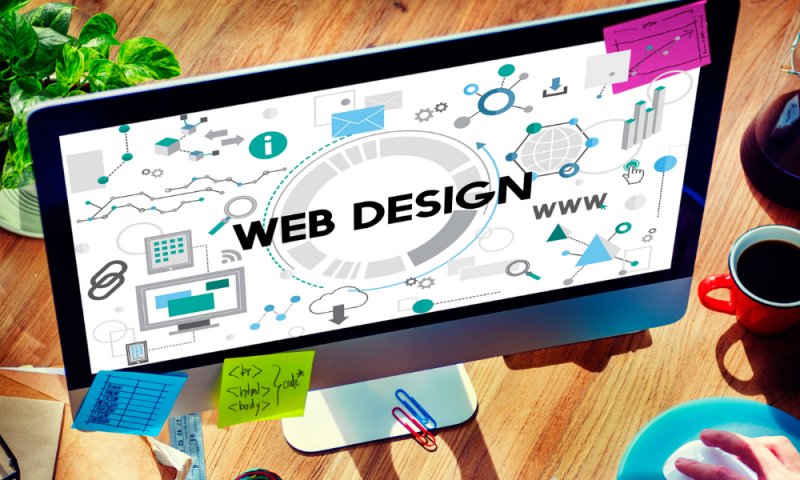
Web Design
A good web design should be attractive, user-friendly and easy to navigate. If you are looking for a website design company, you could find a lot of them online. One such website design company is Blurn. The experts at Blurn could design the website for your brand by incorporating various elements so that there is a steady flow of traffic, the website loads faster and it becomes easy to navigate. Click here to learn more about Blurn.
However, take a look at the principles of good web design you should consider when you are designing a website for a brand.
-
Ease of navigation
It should be one of the important features or a principle that should be kept in mind. That should be implemented when you are designing a website. Most people think that easy navigation is one of the most essential elements for a good website. This is true as most websites would be hard to navigate. If nothing is easily available in the first place, then things might not go smoothly. Easy navigation means having a simple menu layout and the ability to quickly move through different pages. Some of the tips are:
- Keep the navigation bar simple with minimal options
- Mitigate the drop-down menu options
- Follow real-world conventions or make use of language to name the options rather than using jargons
- Avoid too many clicks within the website
Motivate, teach and learn how to implement the tips by checking out some of the best websites available.
-
Responsive Design
Responsive design means the design of a website that should fit well with all devices such as computers, laptops, smartphones or any other display devices, irrespective of their aspect ratios. Aspect ratio is the height and weight of a display device. Every user would wish for a mobile version of any website. The beauty of the designer is not just to design the website for a bigger screen but also to focus on smaller screens. The website should not work just for a particular iPhone or a Samsung phone but should work for all devices, irrespective of the operating system and phone types. For responsive design, you could ensure that buttons could be clicked, images should be optimised and have consistency when it comes to colour schemes. The users should be able to go through different pages to understand what they are all about. Keeping the colour scheme consistent is one of the hardest tasks. Every person might not like one particular colour or a combination of colours. There could be a trade-off between colours. You should make sure that the colour you choose is well-liked by others. Some colours might fit well to certain texts while some might not. Maintaining consistency could be key here. You could run a survey, test and iterate until you get positive feedback from the users. The colour scheme on your website should be consistent. Never do a combination of colours which could be a bad idea.
-
Comfortable User Interface
A user interface is used where the users could interact with the system. It’s a bridge between the user as well as the system. If the user interface is good, then the user would like to spend more time on it. It is the job of the designer to make the user interface look clear and fresh. You should utilise the page layout effectively, keep the interface simple, remove irrelevant information, bring in consistency in font and colour and avoid infinite scrolling of information. You could connect it to the user’s own experience to make something intuitive. Make use of metaphors when you are designing. You should find out who the users are, the activities that would be carried out and the interaction that would take place. The interactions of the users with their product should be optimised so that they match the user’s activities and needs. When it comes to finding the right information, a user would not be happy if he or she does not get what they need. You should be specific in providing the information.
-
The performance should be great
The performance of the website should be very smooth and not slow. If the performance is too slow, it would create a bad impact on the company of the website. The users might stop using the website. You should think and act wisely. Different types of testing tools for websites. You have to choose one to test the speed of your website. The first step rather than updating the website with content would be to improve the website speed. With the help of a tool, you could find out why the performance is slow. To increase the website speed, you can try compressing your files, avoiding using images and adding more text, optimising the images and reducing HTTP requests.
-
Feedback Regarding progress
Feedback is a response about the task process or an event after it gets completed or during its stage of completion. You should know what is going on inside the system or website in this case. If you are making use of a website for doing some online transactions, you might have no idea what would be going on in the system at one point in time. Immediately you would get a message that the transaction failed. You would become clueless at this point. It would be better if the website provides appropriate feedback regarding the failure of the transaction or the error behind it like the money limit in your bank, connectivity issues or technical glitch of the website. Feedback about progress is an important aspect of a website design.
-
Avoid alerts when not necessary
Never annoy the users by providing unnecessary alerts whenever they do something on the website. If a user is trying to purchase something and make a payment online, you should provide alerts only when the transaction is successful or unsuccessful. Never provide unnecessary alerts when they enter the card details or address.



